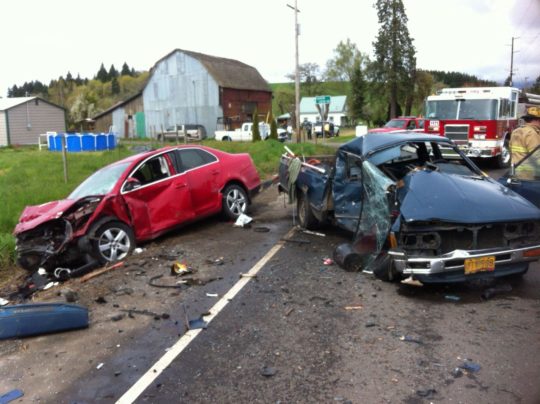Please stay on the line if you want to make driving dangerous
By ROBERT MEYEROWITZ
In the seemingly interminable debate about funding for roads in South Carolina, with the latest gas-tax hike up for floor debate today in the state Senate, we’re often told that billions of dollars must be taxed or borrowed, and spent, in order to make the roads safer and more efficient.
There is something both common and peculiar about believing that all problems can be solved by raising and spending revenue from a regressive tax or going deeper into debt for a generation or more, but still, one has to define the problem in order to solve it: That is to say, why are the roads unsafe?
Among the several factors that may make them so, the roughness of them, the thing roadwork might address, seems to be a lesser one.
Anecdotal evidence has suggested for some time now that a much bigger factor is the behavior of drivers, not roads: in particular, distracted driving, which comes down mostly to people using their phones while driving.
Until now, we had very little data to back up what many assumed was true.
Now we have some.
Zendrive, a company that “uses the sensors on a smartphone to measure and improve driving behavior,” was able to study “actual device use among 3.1 million drivers over 5.6 billion miles of driving,” between December 2016 and February 2017.
It published its findings Monday.
This, it says, is the largest distracted driving behavior study yet undertaken: “There are many small scale distracted driving reports, but their conclusions vary and their statistical robustness is questionable. This topic is too important to leave ambiguous.”
Zendrive found that in 88 percent of trips, drivers made at least some use of their phones. On average, drivers spent 3.5 minutes per hour on their devices. In other words, Americans use their phones nearly every single time they get behind the wheel.
“We started with some commonsense assumptions,” writes report author Noah Budnick, Zendrive’s director of public policy and government affairs:
- Distracted driving is dangerous
- Phone use behind the wheel is distracting, no matter what you’re doing
- Even a few seconds focused on your phone instead of the road can have dire consequences
- Everyone has phones
- Traffic deaths are rising and distracted driving is contributing to this increase
- Phone use is very difficult for crash investigators to capture
On the report’s list of most distracted states, South Carolina came in at 14th, just ahead of the District of Columbia and just behind Connecticut. The least distracted state was Oregon; the most distracted, Vermont.
South Carolina has had a law since 2014 that motorists cannot text using a handheld device while driving. (They can still dial and speak on a cellphone while driving, which is some of the activity Zendrive has captured.) The maximum fine for a single infraction is $25, among the lowest in the country (in Georgia, it’s $150; in North Carolina, $230), and violations cannot be included in DMV or SLED records or be reported to insurers. Since its inception, the Highway Patrol has written 1,939 tickets for it.
There is a bill in the state House, currently resting in committee, that would make it unlawful “to drive a motor vehicle while engaged in any activity that materially and appreciably impairs a driver’s faculties to drive a motor vehicle.” It’s not clear whether this would include talking on a cell phone. It would carry a maximum penalty of a $500 fine and could only be charged if ” the driver is observed violating another motor vehicle offense due to his being distracted by activities performed in the motor vehicle.”
It’s not certain, however, that this is a threat to safety that can be mitigated by harsher laws or steeper penalties.
California, Delaware, Hawaii, Illinois, Maryland, Nevada, New Hampshire, New Jersey, New Mexico, New York, Washington, and West Virginia prohibit the use of hand-held cellphones while driving. So do Connecticut and DC, which bracket South Carolina on the list of distracted states. So does Oregon, which was the least distracted — and so does Vermont, which was the most.
What seems to be clearer is that one of the greatest threats to the safety of motorists is unlikely to be addressed by raising the gas tax or by the state Department of Transportation (or the Transportation Infrastructure Bank) spending billions more dollars on roads, especially on new roads, which will inevitably lead to more people driving more cars as they use their phones.
One curious thing about the Zendrive report is that in the day or so since its release, despite its arguably eye-opening finding, it hasn’t gotten more coverage. Perhaps we just don’t want to know that, when it comes to motorists’ safety, the problem isn’t really roads.
It’s us.

